The Geniuses on the Front Lines of Sustainable Seafood
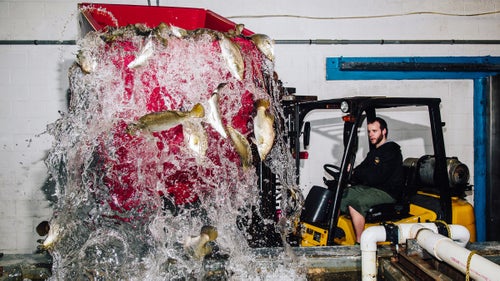
Wild fish? Farmed fish? No fish? This is no Dr. Seuss rip-off; it’s the increasingly confusing situation that seafood consumers are facing. But as Tim Zimmermann found in our , a growing horde of thoughtful farmers, scientists, and harvesters wants to bring the fruits of the sea into the 21st century—and they’ll stop at nothing to figure out how.
Photo: Fully grown barramundi are transferred into a new tank at Australis Aquaculture headquarters in Turners Falls, Massachusetts. Fish at the plant move through a series of progressively larger tanks that give them more space to swim as they grow. They are held in superclean water for a few days before being shipped out.
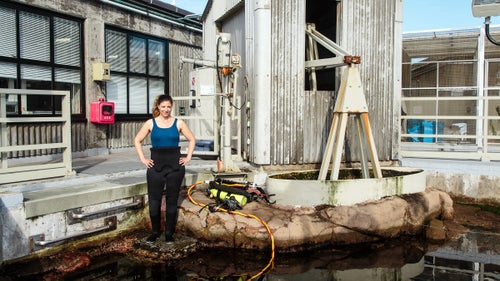
Jennifer Dianto Kemmerley, director of Monterey Bay Aquarium’s program, gets ready to take a dive in the kelp forest on the roof of the aquarium. To Kemmerley’s left is a specially designed surge machine that creates the constant water movement in the tank that kelp needs to survive.
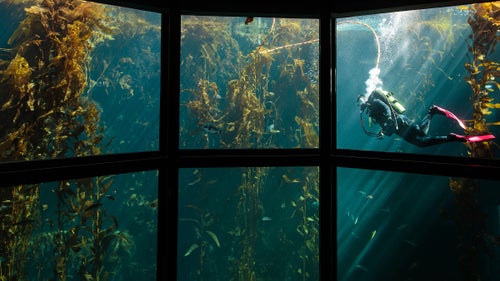
Kemmerley dives in the kelp forest. At 28 feet deep, it’s one of the tallest aquarium exhibits in the world. The tank is home to sardines, leopard sharks, and a host of other fish.
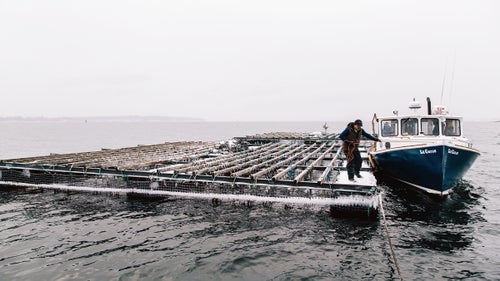
Gary Moretti of ties up La Cozze (“The Mussel”) alongside a mussel raft. Each raft is composed of 40-by-40-foot steel frames that dangle 400 fuzzy ropes (the mussels adhere to them) reaching depths of 30 to 40 feet. Casco Bay is the perfect mussel breeding ground since it contains minimal sediment and plenty of phytoplankton, giving the mussels a higher meat-to-shell ratio.
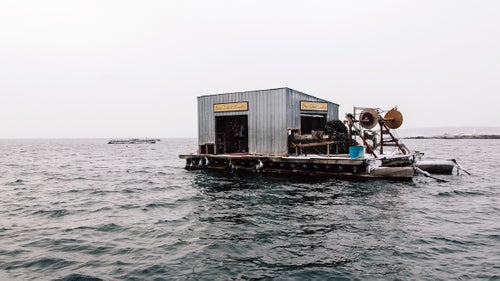
Bangs Island Mussels has been operating in Casco Bay, off the coast of Portland, Maine, since 1999.
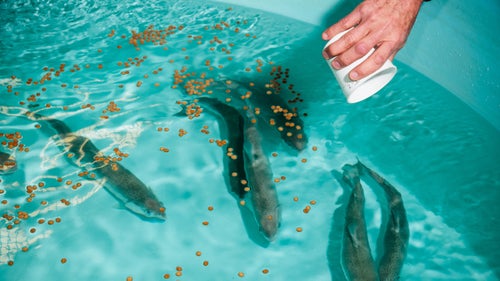
USDA scientist Rick Barrows feeds rainbow trout pellets made of plant-based protein ingredients like pistachio meal, corn protein concentrate, and soybean meal. Twice a day, these large fish are given pellets until they reach “apparent satiation”—that is, until they stop eating. Fish of this size are kept on hand for conducting digestibility studies of new ingredients.
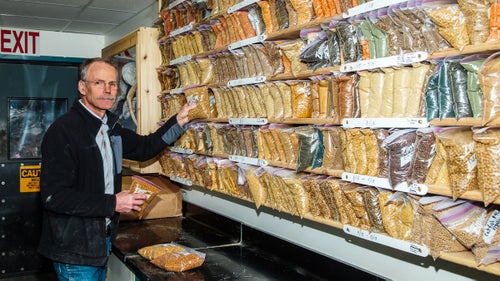
Rick Barrows shows a wall of different fish feeds manufactured at the USDA’s Agricultural Research Service in Bozeman, Montana. Barrows has demonstrated that eight popular fish-farm species do as well or better on his fish-meal-free feeds, which helps the aquaculture industry reduce the pressure they’re putting on maxed-out forage fish stocks. The shelves hold 500 to 600 samples for approximately 20 different species. The USDA keeps the samples for about two years in case they need to go back and check them for nutrient content if fish show slow growth.
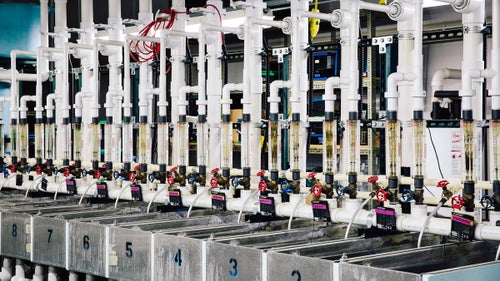
This is an experimental system at the Agricultural Research Service being used to determine optimal temperature for fish growth. Twelve distribution boxes can be set at different temperatures, and each box feeds three tanks of fish.
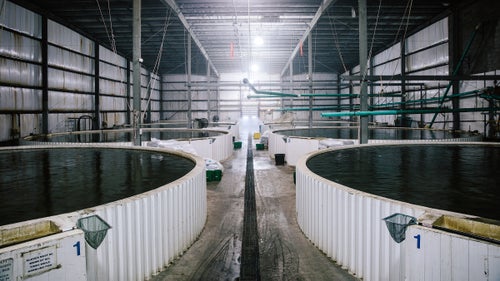
Barramundi tanks at headquarters. Australis helped pioneer the use of closed-containment (land-based) fish farming; its Turners Falls location is one of the largest water-recycling facilities in the world. Ninety-nine percent of the water is recycled, and fish waste is donated to local farmers. The larger fish in these pools grow to maturity before being moved to finishing tanks. The water turns over in each tank more than once per hour to maintain self-cleaning conditions.
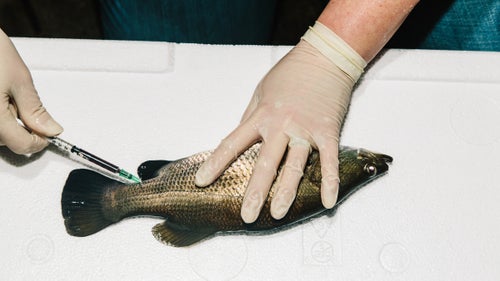
An Australis Aquaculture fish technician checks fish several times each week. Blood is drawn to examine how water quality affects blood chemistry, which helps ensure low stress levels.